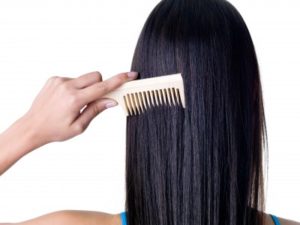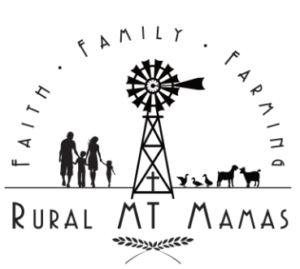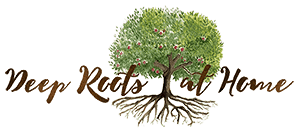Dear, dear friend and lover, you’re as beautiful as Tirzah, city of delights, Lovely as Jerusalem, city of dreams, the ravishing visions of my ecstasy. Your beauty is too much for me—I’m in over my head.
I’m not used to this! I can’t take it in. Your hair flows and shimmers like a flock of goats in the distance streaming down a hillside in the sunshine. Your smile is generous and full— expressive and strong and clean. Your veiled cheeks are soft and radiant.Song of Solomon 6:4-7 MSG
Song of Solomon is a passionate, erotic love poem, and a controversial book in the bible. But it drives home a point…
Beautiful Hair is lovely to look at, no doubt about it. In the above scripture, the man is going on and on about how beautiful his lover is…. v5 “Your hair flows and shimmers like a flock of goats in the distance streaming down a hillside in the sunshine.”
What you do is a personal decision. More and more people are taking up some form of ‘green’ lifestyle. The more I researched, the more I decided that if I could find an easy alternative that worked for me, I’d replace my store brands for natural alternatives. But there is more to it than just the shampoo you use. Here are some beautiful hair basics.
Beautiful Hair Basics
Hair Loss, Growth and Damage
Hair loss for women can happen at any age, but it is most noticeable in our 50’s and 60’s. Hair grows 6 on average inches a year. And, come to find out, it’s natural to lose anywhere from 50 to 100 hair strands a day. Whew…that’s good to know!! Personally, I have always seemed to lose a lot of hair.
Nutritional Influences
There is just no escaping the fact that after genetics, our hair health is related to our diet, or better stated, the nutrients from that diet that our bodies get (or don’t get). You can learn about hair growth cycles here, but the basics are that normally at any one point in time, nearly 90% of your hair is in a growing phase and only 10% is in a resting phase, where it eventually falls out.
Really, the above statement applies to all facets of our health. Our hair, nails, skin and especially our complexion, can give an outwardly visible indication of our overall health. There is no hiding it!
Protein
- Hair is primarily made up of keratin, and the body uses protein to make it. Not enough protein in our diet can not only cause a larger percentage of our hair to go into the resting phase (an energy conservation reaction), but can also hinder the body from growing new hair strands.
- It has also been documented that older adults need more protein as they age because loss of protein tissue is most significant then. See the connection to noticeable hair loss in our 50’s and 60’s?
- Protein plays a part in the formation of blood cells which transport vitamins and minerals to the scalp.
Vitamins and Minerals
Vitamins and minerals are also necessary nutrients for proper hair growth and the influence on hair loss. In NO WAY am I ignoring the importance of all vitamins and minerals, but I want to briefly mention one example: silica. Here is a summary from recent findings:
Silica is a mineral essential to bone growth and overall synergistic body functioning through mineral absorption of calcium and magnesium (important for hormone balancing, musculoskeletal, cardiovascular and central nervous system health), and immune system support. Quite the powerhouse! We are born with abundant levels of silica, hence children’s beautiful silky-soft hair, soft skin and strong nails and become silica deficient as we age (if you are over 40 you probably are). Among other symptoms, hair loss and thinning can be attributed to this deficiency. As it turns out, bamboo extract has the highest potency of silica of all sources.
Besides nutritional influences, there are other factors affecting hair’s growth cycle. Basically, those factors are anything that interferes with how the growth cycle works: stress, sleep, medications, illness, infections, chemicals, pregnancy and so on.
Environmental Influences
Simply put, chemicals in personal care products are absorbed into the skin just like the ones we consume through our diet. Sodium laurel sulfate, or some derivative of it, is a big player in shampoo and conditioners. I won’t go into the details, but you can learn more about chemicals in personal care products here.
Fragile hair (temporary hair loss or thinning from breakage) can result from:
- chemical applications, such as dyeing, perming,
- blow-drying, curling irons and similar treatments
- Tight hairstyles, extensions and other harsh styling practices…even hair clips can cause breakage.
There is no doubt that the commercially driven beauty industry is booming. But there are plenty of natural alternatives you can easily add to your regular hair care routine if you know how.
Natural Alternatives
Start with a Good Base
This concept seems simple enough, but I don’t want to overlook it.
If you want to eliminate chemicals in your shampoo, there are plenty of non-shampoo (aka no-‘poo) alternative discussions on the internet. Because of that, I’m not going to go into great detail here. One of my favorite resources is here. Here is a VERY brief summary of natural shampoo alternatives (in no particular order)
- Baking soda with an apple cider vinegar rinse – I tried this one for about 4 months, but in the end, it just wasn’t for me.
- Castile soap with an apple cider vinegar rinse – Personally, my favorite. I tried this first and did it for 2 years, then went back after trying the baking soda/apple cider vinegar. I use Dr. Bronner’s as the liquid castile base and dilute it with water. A little goes a long way and you can actually use much less than you think. A dilution ratio that works for any container size is 1 part Dr. Bronner‘s to 8 parts water. This doesn’t seem like much, but it works really well.
- Commercial organic shampoos that don’t contain any chemicals are another option. If you want to evaluate your shampoo ingredients, go here.
Vinegar Rinse
For both the baking soda and castile soap options, you will need to us a vinegar rinse to close the hair cuticle.
- You can use white vinegar, but the unfiltered, raw, apple cider vinegar has additional nutritive benefits, although too much may make your hair oily.
- Proportions will vary depending on your hair type and your preferences. I’ve played with this and found that for my hair, approximately 1 teaspoon per 1 cup water is best. I did use more in the beginning, about 1 tablespoon apple cider vinegar/1 cup water and my hair was slightly oily. Mix up a squeeze bottle –full and keep it in the shower.
- You can leave the vinegar in or rinse it out. Don’t worry…your hair will only smell like vinegar until it dries!
Some benefits you will see almost immediately and some take a little longer. Be watching for these changes:
- Super silky, shiny hair – the first day I noticed a difference and it only got better.
- Less hair loss in the drain – this was noticeable in a few days.
- More volume and body or maybe even wavy or curly hair. Now that your hair isn’t being weighted down with chemical ingredients, I’ve read many people have discovered they have totally different hair type! Mine is still stick straight, but it is much lighter and has more body.
- Overall savings – baking soda is the cheapest, but even Dr. Bronner’s and apple cider vinegar are relatively cheap considering the dilution ratio.
Obviously, it’s your hair and what you decide to do is totally up to you.
A natural beauty routine that works and is good for your hair is possible! Next up, how to incorporate essential oils for even healthier hair.
What do you think? Do you have suggestions to add?
Pam is an experienced, professional, freelance B2B copywriter, consultant and trainer. She blends her love of studying God’s Word and interests in natural beauty, health and home alternatives and communication skills to bring you resources to improve your everyday life. You can also find her at



Leave a Reply